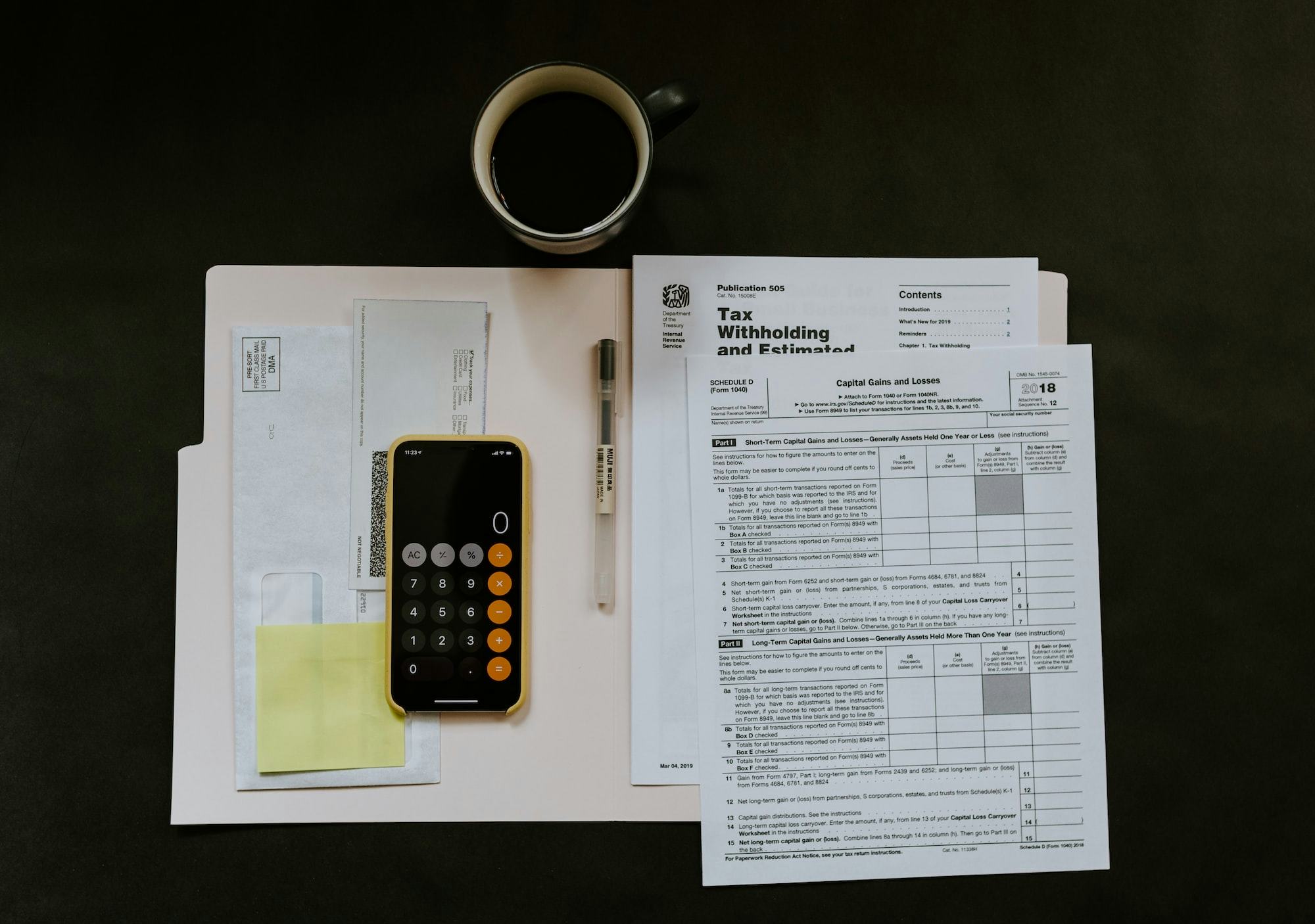It’s never too soon to start thinking about taxes. Whether you’re an entrepreneur who’s just starting out or a seasoned business owner who knows the IRS ropes, this quarterly task is a lot like flossing — it must be done consistently and correctly.
In this article, we’ll help clarify what your tax obligations are, how to calculate and set aside enough money to cover your business taxes, outline penalties for underpayment or recouping tax overpayments, all to help keep your business on the right side of the IRS.
In This Article:
- What Are My Tax Obligations?
- How Much Does a Small Business Need to Set Aside for Taxes?
- How Does a Business Save for Taxes?
- Are There Any Penalties for Underpayment of Business Taxes?
- What Happens if a Business Overpays Its Taxes?
- How Do I Manage My Tax Savings?
What Are My Tax Obligations?
To meet your tax obligations, you’ll first need to understand what they are. You’re responsible for both federal, state, and local taxes, including:
- Self-employment tax: Covers self-employed business owners’ Social Security and Medicare tax obligations.
- Income tax: Taxes levied upon individuals and companies on earnings.
- Payroll tax: A percentage of an employee’s earnings withheld by a business and paid to the government on the employee’s behalf.
Moreover, federal taxes are just a portion of the taxes you’ll need to address. Your business may be responsible for the following taxes (among others) as well:
- State and local sales taxes: This applies to you if your business sells taxable goods.
- Franchise tax, or Privilege tax: States with a sales tax nexus collect taxes on franchise businesses.
- Property tax: Business-owned real estate taxes vary from state to state.
- Excise tax. Taxes on specific goods or products like tobacco, alcohol, or gasoline.
How Much Does a Small Business Need to Set Aside for Taxes?
A general rule of thumb for covering your federal and state tax obligations is to set aside a minimum of 30% of your business income. The total amount will vary depending on your industry, or seasonal fluctuations, but allocating approximately 30 - 40% of your earnings should get you near or at your Federal and State tax obligations.
Working with a reputable CPA can help take the guesswork out of tax estimations and find other legitimate ways to pay less in taxes. QuickBooks and Bench are two of our partners that can help you prepare for this tax season and keep your books organized going forward.
How Does a Business Save for Taxes?
You can choose when and how often to set aside money for business taxes based on your needs or determined by your business operations. There are three options:
Per-Payment
If you’re new to business, it may be difficult to estimate your total income for the year since you may not have financial records to base your estimates on. It’s also likely your income may be unstable until the business becomes more established.

How to Use the Per-Payment Tax Savings Method
By now, you’ve had a chance to create a business bank account. Using the per-payment tax savings method means setting aside 30% of that sum in a “tax reserves” business savings account every time you receive a payment.
For high sales volumes or high-frequency payments, setting aside 30% of every transaction becomes impractical. In this scenario, set aside 30% of your weekly or monthly revenues for tax purposes.
📌 Pro tip: If you regularly receive low-frequency yet high-value payments and your business is on a solid financial footing, consider paying your taxes with one of these receivables per month to keep you ahead of the tax curve.
Monthly Payment
Another handy tax payment methodology for newcomers is the monthly payment method. Especially useful for new business owners who have yet to turn a profit, whose income remains consistent over the previous year, or if your income has changed significantly in the previous year, or years, and won’t provide an accurate estimate for the current year’s tax.
How to Use the Monthly Tax Savings Method
Start by calculating your average monthly income. To do this, calculate your business income from the beginning of the financial year to the present month. Divide that by the number of months passed.
If it’s March and you’ve earned $12K year-to-date, you would divide that number by three, for a total of $4K. This is your “average monthly income.”
Next, calculate 30% of that average monthly income, e.g. $4K, to determine the amount you should set aside for your taxes. In this instance, 30% of $4K is $1200.
📌 Pro tip: Look for business savings or checking accounts with a decent earnings rate to put your money to work before heading to the IRS coffers.
Annual Payment
If you filed business taxes last year and you don’t expect your income to change significantly, you can employ the Annual or Yearly Payment method for tax savings.
How to Use the Annual/Yearly Tax Savings Method
Use the previous year’s tax return business income total, and divide by four. Calculate 30% of that sum. That amount is what you’ll need to save and pay for your quarterly estimated taxes.
For example, you earned $175K last year and expect your income to remain close to that in the current year. Divide that number by four.
In this instance, $175K divided by four = $43,750. 30% of $43,750 is $13,125 – that will be your quarterly tax payment. You should et aside approximately $3300 monthly for your tax bill.
Are There Any Penalties for Underpayment of Business Taxes?
As long as you pay 100% of the present year’s taxes in quarterly estimates you won’t be penalized for underpayment — even if that amount does not meet the entirety of your tax obligations for the year. It's sometimes called the “Safe Harbor” rule.
However, if you underpay your quarterly taxes, you’ll know come tax time. You can determine if you’ve underpaid — and how much you’ll pay in penalties by filing IRS Form 2210 (Underpayment of Estimated Tax by Individuals, Estates, Trusts).
What Happens if A Business Overpays Its Taxes?
If you adhere to the 30% rule, you may have overpaid your taxes come year’s end. While it’s never ideal to have your business’s cash tied up in unproductive situations, you’ll receive the overpayment in the form of a tax refund — which you may consider saving for next year’s taxes.
How Do I Manage My Tax Savings?
As mentioned, look for a business savings account that offers attractive interest rates, then start adding money to this account regularly and consistently to take the stress out of tax time.
Get Your Taxes in Shape with Good Bookkeeping
Whether you're new to business or have been in business for years, now's a good time to align with a reputable bookkeeping service. We've partnered with Bench and QuickBooks to get your books and taxes in top shape.
How Else Can Skip Help? Whether you need assistance navigating funding for your small business — like SBA loans, grants, or other financing options, or guidance with government-related services — like TSA PreCheck or DMV appointments, we’re ready to help. Become a member and skip the red tape.


